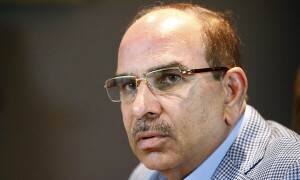UNDOUBTEDLY, Pakistan continues to face one of the biggest calamities in its history caused by the super floods of last summer. Although the 2005 Kashmir earthquake claimed far more lives, the 2010 floods have dwarfed the economic losses suffered by our economy from any other single natural disaster.
Are floods a natural phenomenon? Gilbert F. White, the father of floodplain management in the 20th century, wrote in 1958 that floods were acts of God, but that flood losses were the result of human occupation of floodplains to a large extent. So shouldn't we think about what we need to do once the floodwaters have totally subsided? If we do not have full control over such floods what should we do to reduce losses in the future?
Before we look into our options of flood management, we might think about what we said and did after the Kashmir earthquake five years ago. Before this super flooding, the 2005 earthquake had been the worst natural calamity in the history of Pakistan. Since the country did not have a central agency to deal with it, the Federal Relief Commission (FRC) was established just a few days after the October quake to coordinate the huge response and relief operation in the quake-affected areas. A very senior army officer was appointed as the first relief commissioner.
The gigantic task of the commission was to organise and structure the response and relief operation in partnership with federal and provincial departments, civil society organisations and the international community, bringing relief aid and human resources such as response workers and paramedics. The relief was formally ended by the government on March 31, 2006 and the FRC was dissolved.
The establishment of the FRC was a stop-gap arrangement and the government felt the need for another organisation which could take the job beyond relief.
Therefore, the unprecedented task of reconstruction and rehabilitation in Pakistan's history was handed over to another authority already created by the government in October 2005, named the Earthquake Reconstruction and Rehabilitation Authority (Erra). But again, Erra is a project-oriented body meant only for reconstruction and rehabilitation of the nine quake-affected districts of Khyber Pakhtunkhwa and Azad Jammu and Kashmir (AJK).
A new institutional policy framework for disaster risk governance was proposed in the aftermath of the 2005 earthquake. The then president promulgated a presidential ordinance, the National Disaster Management Ordinance, in December, 2006. This ordinance provided for necessary institutional arrangements, a policy framework and a reference point for future disaster risk governance in Pakistan.
As a result, the National Disaster Management Authority (NDMA) was established as the apex body for devising national disaster risk management plans at the country level and coordinating disaster response, relief and recovery with other national and international role players in disaster risk management.
Taking a brief look at the immense overhauling of our disaster response machinery in the last five years, one is angered to witness the apathy and failure of this machinery to coordinate early warning, evacuation, response, relief and recovery of flood victims. Here I would identify some of the endemic governance issues which may hinder our disaster risk management system from performing better in future.
The National Disaster Risk Management Framework charged the National Crisis Management Cell (NCMC) with the same responsibilities of response as those assigned to the newly established NDMA such as managing a round-the-clock operational control room and collection of information on all sorts of emergencies in the country to coordinate with other agencies.
The framework does not suggest which organisation would take the lead in case of a crisis and with whom other stakeholders would coordinate and cooperate since both the structures exist in parallel. Together with the NCMC, the Emergency Relief Cell (ERC) under the cabinet division retains the charge of procuring relief items and making arrangements for the receipt of international assistance and response teams.
The same role has been made part of the portfolio of the NDMA in the post-2005 disaster governance structure. So, the ERC and NDMA exist in parallel to each other. Likewise at the provincial level, the provincial ERCs are working parallel to the Provincial Disaster Management Authorities (PDMAs).
An environment of friction, conflict, power struggle, trust deficit and lack of coordination has resulted in a complex governance crisis. To its credit, the NDMA officially moved the National Disaster Management Commission (NDMC) to order the merger of the ERC and 6th Disaster Aviation Squadron with the NDMA and provincial civil defence departments with the respective PDMAs to streamline the functions of the NDMA and PDMAs. Above all, these steps were intended to help establish the NDMA and PDMAs as the central authorities for streamlining disaster risk governance in the country.
Despite the approval of the NDMC, headed by the prime minister, the annual report 2009 of the NDMA noted that none of the aforementioned decisions were implemented by the respective authorities, federal as well as provincial.
Not only this, the report noted that the federal government did not allocate the promised funds for setting up the National Disaster Management Fund and transfer of the Prime Minister Relief Fund to the NDMA despite the approval of these decisions by the NDMC.
Likewise, the provincial governments did not actively respond to instructions for the establishment of PDMAs and the district disaster management authorities and allocation of funds for these bodies though these decisions were approved by the NDMC.
One is not sure, how the addition of the newly envisioned National Oversight Disaster Management Commission would contribute to an existing plethora of government organisations.
Lack of political will and adhocracy on behalf of the government are some other factors which cast a shadow on the future of disaster risk governance in Pakistan.
I am afraid that if the government, policymakers, the bureaucracy, civil society, donor agencies and the political leadership of the country do not seriously deal with these institutional snags, not much would change once the floodwaters have subsided, and the people of Pakistan may not ever feel safe and secure, regardless of whether they expect disaster to strike in the form of torrential rains, flooding, landslides or earthquakes.
The writer is a doctoral candidate in development studies at the Massey University, New Zealand.
a.r.cheema@massey.ac.nz











































Dear visitor, the comments section is undergoing an overhaul and will return soon.